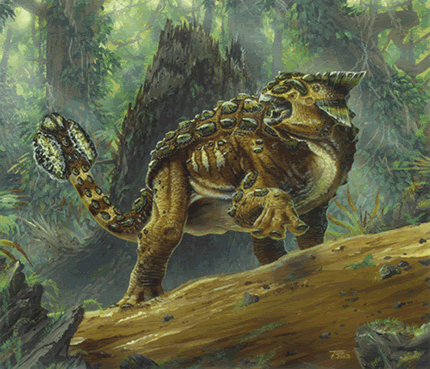Although nowhere near the largest of the Jurassic dinosaurs, Stegosaurus were still about the size of a bus. Distinctive and heavily built, they were herbivores with short forelimbs and would have walked with their small head close to the ground and the four-spiked tail held high. The double row of plates running along the back helped control body temperature and were probably used in display or possibly in defence against carnivorous Allosaurs. Most fossils for the three known species, including some complete skeletons, have come from the USA, although a recent discovery in Portugal suggests a wider distribution.
Scientific name: Stegosaurus
Rank: Genus
Common Name : Roof-lizard










![[image] [image]](http://i483.photobucket.com/albums/rr192/EternalPan/tarbosaurus_burian.jpg)


